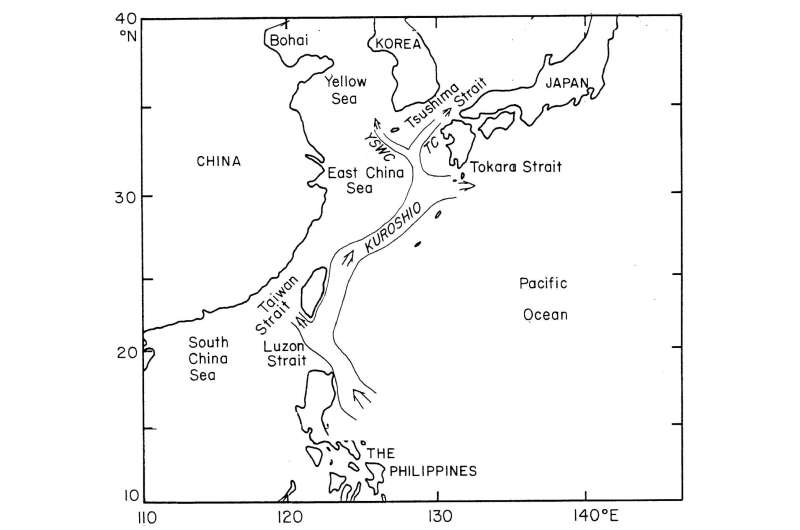Dissolved barium as a new quantitative indicator for Kuroshio incursion into the East China Sea

The Kuroshio ocean current, originating in the Philippine Sea east of the Luzon Strait, enters the East China Sea (ECS) northeast of Taiwan Island, flowing along the outer edge of the ECS shelf, and turns eastward to the Pacific Ocean through the Tokara Strait (Figure 1). It directly affects hydrological conditions, the distribution of biota, and seabed sediments in the marginal seas of China, particularly the ECS.
Research programs like the China-Japan Joint Research Program on the Kuroshio (JRK) and the Kuroshio Edge Exchange Processes (KEEP) offer detailed understanding of the Kuroshio's impact on adjacent sea areas. Among these, the Luzon Strait, the area northeast of Taiwan Island, and the sea area southwest of Kyushu (Japan) were the three key incursion areas of the Kuroshio into China's marginal seas. But generally, except for some research discussing Kuroshio incursion after the investigation of parameters like nutrients and inorganic carbon, most studies have been focused on the numerical simulation of marine oceanic processes. Very few reports concern trace elements such as barium in the Kuroshio mainstream and adjacent East China Sea.
Now, Professor SONG's group in Institute of Oceanology, Chinese Academy of Sciences, have identified that the scope and extent of the Kuroshio incursion into the East China Sea could be quantitatively described by using barium as a tracer. In an article titled "Dissolved barium as a tracer of Kuroshio incursion in the Kuroshio region east of Taiwan Island and the adjacent East China Sea", co-written by professor Jinming Song and published in Science China: Earth Sciences, the geochemical characteristics and the factors influencing dissolved barium in the Kuroshio mainstream east of Taiwan Island and the adjacent East China Sea area are reported. The influx and extent of incursion of Kuroshio water into the ECS were first quantitatively estimated by using barium as a tracer.
By the investigation of dissolved barium in seawater in the region of the Kuroshio mainstream east of Taiwan Island and the adjacent ECS, the study found that the Kuroshio upwelled in the sea area northeast of Taiwan Island; the north-flowing water in the Taiwan Strait restrained the incursion of Kuroshio surface water onto the ECS shelf, while Kuroshio subsurface water gradually affected the bottom of the ECS from outside. Using end member calculation and choosing barium as a parameter, the authors report that the Kuroshio surface water had little impact on the ECS, while the Kuroshio subsurface water formed an intrusion current by climbing northwest along the bottom of the middle shelf from the sea area northeast of Taiwan Island into the Qiantang Estuary, of which the volume of Kuroshio water was nearly 65 percent. Kuroshio water was the predominant part of the water on the outer shelf bottom and its proportion in areas deeper than the 100 m isobath could reach more than 95 percent. Thus, barium was able to provide detailed tracing of the Kuroshio incursion into the ECS owing to its geochemical characteristics.
This study enriches the research of the Kuroshio. It provide a new means to reveal quantitative interactions between the Kuroshio and the East China Sea, and it have important significance and reference value in exploring the influence of the Kuroshio on the ecological environment of the ECS.
More information: Wei Liu et al, Dissolved barium as a tracer of Kuroshio incursion in the Kuroshio region east of Taiwan Island and the adjacent East China Sea, Science China Earth Sciences (2017). DOI: 10.1007/s11430-016-9039-7
Journal information: Science China Earth Sciences
Provided by Science China Press





















